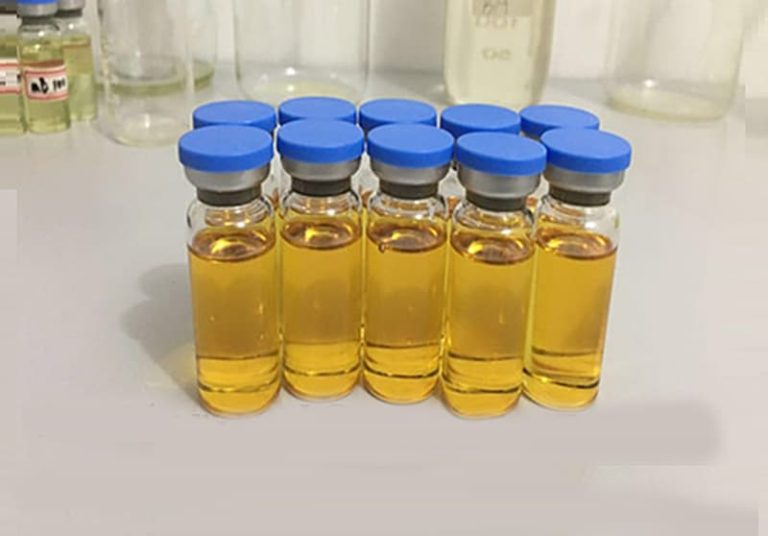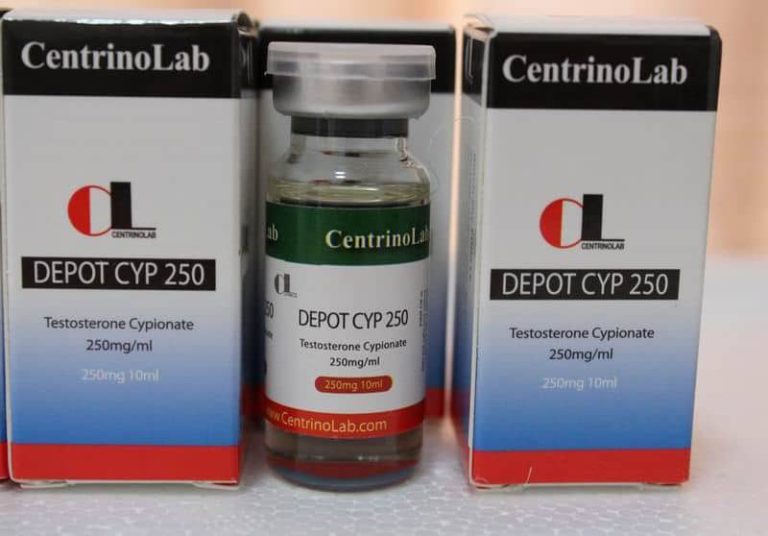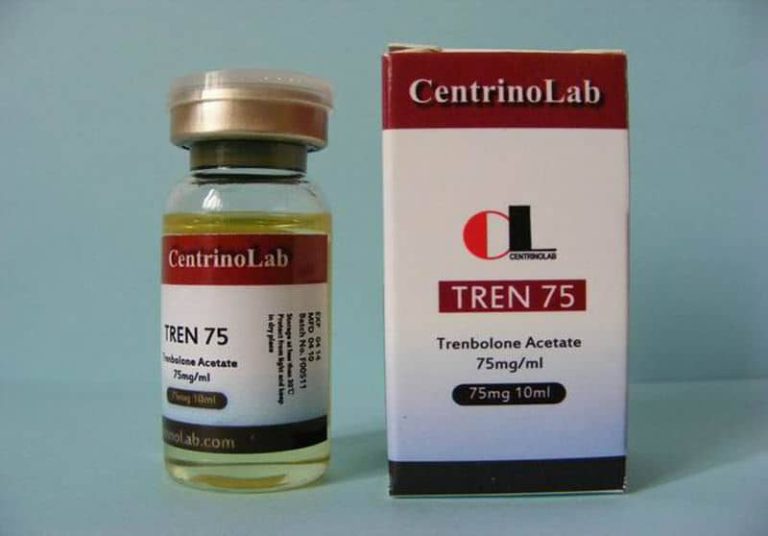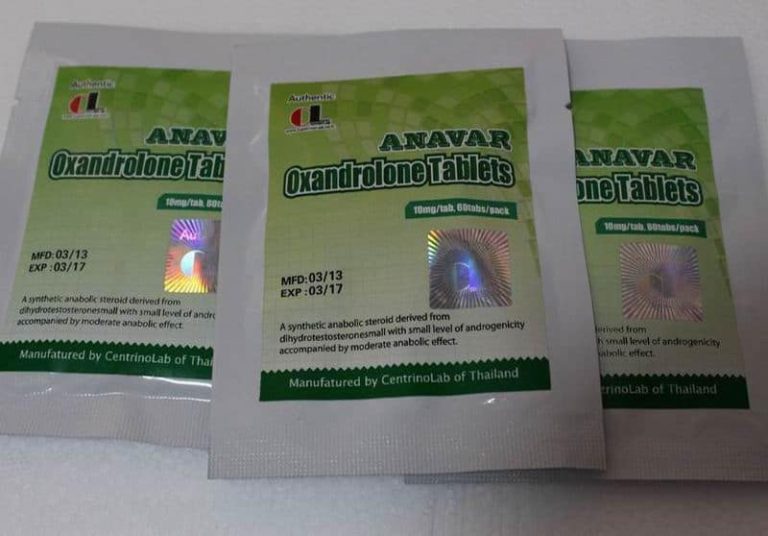Nandrolone decanoate, also known as 19-nortestosterone, Nandrolone (Deca-Durabolin®) is a synthetic (made in a lab) version of the hormone testosterone.Nandrolone is a type of anabolic androgenic steroid.It is an injectable medication that belongs to the group of drugs called class II anabolic androgenic steroids (AAS). The drugs that fall under class II AAS are all known as 19-nortestosterone derivatives; they are all synthetic derivatives of the endogenous male hormone testosterone. Healthcare providers prescribe nandrolone to treat some forms of anemia. It can also help build tissue in people with weakened or damaged tissue.
As with many other anabolic steroids, nandrolone is commonly misused. Some bodybuilders and teens use nandrolone to “bulk up,” or gain muscle mass. Some athletes use nandrolone to try and boost their performance. But this is dangerous.
Nandrolone provides health benefits, but its use comes with risks of serious side effects. You should only take nandrolone under the close supervision of a healthcare provider.
Nandrolone Decanoate Mechanisms of action
Nandrolone is an androgen receptor agonist, and its actions are mediated through the same receptors that regulate the action and activity of endogenous testosterone. It exerts its effects at the genetic level by altering the transcriptional activities of specific genes that control the expression of the relevant proteins. After parenteral administration, nandrolone binds to androgen receptors and forms receptor complexes; these receptor complexes can then enter the cell nucleus and bind to the relevant nucleotide sequence of the chromosomal DNA. Once bound to chromosomal DNA, nandrolone is then able to promote the expression of the needed proteins though the modification of nuclear transcription in the cells.
Nandrolone decanoate shares the actions of endogenous androgens such as testosterone. Exogenous androgens such as nandrolone decanoate promote protein anabolism and stimulate appetite which results in a reversal of catabolic processes and negative nitrogen balance. Increases in lean body mass in patients with cachexia (e.g., malnourished dialysis patients) and decreased bone resorption and increased bone density in patients with osteoporosis are often noted. Blood glucose, erythrocyte production, and the balance of calcium are also affected by androgens. Increased erythrocyte production is apparently due to enhanced production of erythropoietic stimulating factor. Patients with anemia associated with renal disease will have increases in red blood cell volume and hemoglobin after receiving nandrolone decanoate.
Since nandrolone decanoate has actions similar to endogenous androgens, administration of nandrolone decanoate has the possibility of causing serious disturbances of growth and sexual development if given to young children and causing unwanted adverse effects in women. Exogenous androgens suppress gonadotropin-releasing hormone, thereby reducing the gonadotropic function of the pituitary through a negative-feedback mechanism. This results in a reduction of endogenous testosterone, luteinizing hormone, and follicle-stimulating hormone. Exogenous androgens may also have a direct effect on the testes. Reversible increases in low-density lipoproteins (LDL) and decreases in high-density lipoproteins (HDL) also occur.
How does nandrolone DECA work?
Providers give nandrolone as an injection (shot) into a muscle. Once in your body, it behaves a lot like testosterone. Testosterone is a sex hormone called an androgen. Testosterone also has “anabolic” properties. This is why nandrolone is called an “anabolic androgenic” steroid. The language offers clues about how nandrolone works:
Anabolic: Anabolism is the process of building muscles, bones or other body structures. Testosterone promotes tissue growth and expands muscle mass. Androgenic: Testosterone is an androgen. It’s most known for stimulating the development of sex characteristics in men and people assigned male at birth (AMAB).
Scientists modeled nandrolone after testosterone because of testosterone’s anabolic (tissue-building) power. They boosted its anabolic properties while weakening its androgenic properties. So nandrolone has more tissue-building power than testosterone but is a weaker sex hormone.
Still, nandrolone is a sex hormone. The side effects associated with nandrolone occur because it behaves as an added sex hormone in your body.
What is nandrolone used for?
Healthcare providers primarily prescribe nandrolone to treat anemia associated with chronic kidney failure. Anemia involves not having enough healthy red blood cells. Nandrolone boosts red blood cell production.
Providers also use nandrolone to treat:
- Osteoporosis in people who no longer get periods (postmenopause).
- AIDS-associated wasting away syndrome.
- Chronic kidney disease (CKD).
- Breast cancer.
Some studies suggest that nandrolone can help heal damaged joints.
How should I use this medicine?
Use nandrolone only as prescribed by a healthcare provider. The U.S. Drug Enforcement Administration (DEA) classifies nandrolone as a Schedule III controlled substance under the Anabolic Steroids Control Act of 1990. This means having or using nandrolone without a prescription from a licensed healthcare provider is illegal.
Nandrolone is currently unavailable in the United States. The U.S. Food and Drug Administration previously approved it for use, but there aren’t any manufacturers or distributors with current approval to provide it within the U.S.
Healthcare providers who prescribe nandrolone take care to determine the appropriate dosage. They check for side effects so that people can receive nandrolone as safely as possible. It’s essential to take this medicine according to a provider’s instructions.
What are the benefits of using nandrolone?
Nandrolone can help manage certain conditions. Nandrolone:
- Promotes red blood cell production.
- Promotes muscle endurance and healing.
- Builds lean muscle mass.
- Increases bone density.
What are the side effects of using nandrolone?
There are a variety of side effects that could occur in individuals who receive nandrolone decanoate injections. Some of these reactions include, but are not limited to, the following:
- Enlargement of the prostate in elderly men.
- Reduced sperm count and volume in men.
- Hepatitis and hepatocellular carcinoma may occur at high doses. A rare but life-threatening liver disease known as peliosis hepatis may also occur.
- Females may experience the signs of virilization previously mentioned as well as menstrual abnormalities. These effects are reversible if the medication is discontinued promptly.
- In prepubertal children, nandrolone may cause premature closing of the growth plates, which may result in stunted growth.
- There may be alterations in blood clotting factors in individuals receiving nandrolone decanoate injections, which may impair clotting times. Patients on anticoagulants should be closely monitored for bleeding abnormalities while receiving nandrolone decanoate injections.
- Patients may exhibit psychiatric effects such as depression, insomnia, and mania while on nandrolone injections.
- In the renal system, there may be increased retention of water, potassium, nitrogen, chloride, and calcium. The retention of these electrolytes may result in edema.
- Some patients may experience gastrointestinal disturbances, such as nausea, vomiting, and diarrhea.
- Significant increases in low-density lipoproteins (LDL) with a corresponding decrease in high-density lipoproteins may occur in individuals receiving nandrolone injections.
- Change in sex drive or performance; diarrhea; hair loss; headache; trouble sleeping.
This list may not describe all possible side effects. Call your health care provider immediately if you are experiencing any signs of an allergic reaction:
- allergic reactions like skin rash,
- itching or hives, swelling of the face,
- lips, or tongue; breast lump;
- breathing problems;
- changes in mood, especially anger, depression, or rage;
- change in voice;
- dark urine;
- increase in facial hair;
- irregular menstrual periods;
- acne, nausea, vomiting; stomach pain;
- swelling in ankles or legs;
- trouble passing urine or change in the amount of urine;
- yellowing of the eyes or skin.
- Menstrual irregularity can occur with nandrolone decanoate therapy in females.
- Disruption of the regular menstrual cycle secondary to nandrolone decanoate-induced suppression of gonadotropin secretion can lead to amenorrhea or oligomenorrhea.
When androgens (such as nandrolone) are given to women, virilization, manifested by acne, hirsutism, clitoromegaly, male pattern baldness, reduced breast size, and deepening of the voice or hoarseness, can occur. If treatment is discontinued when these symptoms first appear, they usually subside. Prolonged treatment can lead to irreversible masculinity, so the benefit of treatment should be measured against the risk.
Androgens can cause teratogenesis. Androgens are classified as pregnancy category X, and are absolutely contraindicated during pregnancy because of probable adverse effects on the fetus. Androgenic anabolic steroids such as nandrolone decanoate are known to cause embryotoxicity, fetotoxicity, and masculinization of female animal offspring. Nandrolone decanoate is contraindicated in women who are or may become pregnant.
In males:
Male patients can experience feminization during prolonged therapy with nandrolone decanoate, which is believed to result from inhibition of gonadotropin secretion and conversion of androgens to estrogens. These effects are more pronounced in patients with concurrent hepatic disease and include mastalgia and gynecomastia. Feminizing effects are generally reversible. Inhibition of testicular function, testicular atrophy, impotence (erectile dysfunction), epididymitis, and bladder irritation can also occur.
Priapism and excessive sexual stimulation, more common in geriatric males, are generally the effect of excessive nandrolone decanoate dosage. Oligospermia and decreased ejaculate volume may occur in patients receiving long-term therapy or excessive doses. Alopecia resembling male pattern baldness has also occurred.
Prostate cancer as a secondary malignancy or prostatic hypertrophy can develop during prolonged therapy with nandrolone decanoate and are more likely to occur in elderly males. Signs of acute epididymitis (e.g., fever, chills, pain in the inguinal region) and/or urinary urgency should prompt withdrawal of the drug and reevaluation of dosage.
In prepubescent males: When androgens (such as nandrolone) are used in the treatment of immature males, early virilism can be a disadvantage because it is accompanied by premature epiphyseal closure. Monitoring of skeletal maturation should be undertaken at about 6-month intervals. Once the epiphyses have closed, growth is terminated. Even after discontinuation of treatment, epiphyseal closure can be enhanced for several months. Penile enlargement and an increased frequency of erections can also occur.
Children
Nandrolone can affect bone development in children. It can cause a child’s bones to stop growing before they reach their full height. Your healthcare provider will regularly monitor your child’s bones if they take nandrolone.
In males and females:
Peripheral edema can occur with nandrolone use as the result of increased fluid retention (in association with sodium retention) and is manifested by weight gain. In the treatment of patients with impaired renal function or congestive heart failure, the fluid retention is of greater significance. Other serum electrolytes (i.e., calcium, chloride, phosphate, and potassium) are also retained.
Androgen therapy (such as nandrolone) is related to growth and secretion of the sebaceous glands, which can cause an acneiform rash indistinguishable from acne vulgaris.
Hepatic dysfunction can occur from use of androgenic anabolic steroids (such as nandrolone) and have been shown to be more significant with administration of the oral 17-alpha-alkylandrogens (e.g., methyltestosterone). Cholestatic jaundice with, rarely, hepatic necrosis and death have been reported. Elevated hepatic enzymes are more common than overt jaundice. The drug should be discontinued if cholestatic jaundice or hepatitis occurs.
Peliosis hepatis, a condition characterized by splenic tissue being replaced by blood filled cysts, has occurred in patients receiving androgenic anabolic steroids. The cysts are sometimes present with minimal hepatic dysfunction, but may be associated with hepatic failure. They are often not noticeable until life-threatening hepatic failure or intra-abdominal hemorrhage develops. Discontinuation of steroid therapy usually results in complete disappearance of cysts.
Hepatoma also occurs rarely and is usually benign and androgen-dependent; life-threatening malignant hepatoma has been reported. Withdrawal of drug often results in regression or cessation of progression of the tumors. However, hepatomas associated with androgens or anabolic steroids are much more vascular than other hepatic tumors and may be undetected until life-threatening intra-abdominal hemorrhage develops. Androgen therapy (such as nandrolone) has induced osteolysis and can exacerbate hypercalcemia. Androgen-induced hypercalcemia occurs especially in immobile patients and those with metastatic carcinoma of the breast.
Observational studies in post-menopausal women, bodybuilders, and weightlifters using anabolic steroids have revealed ‘pro-atherogenic’ changes in lipid profiles, including decreases in HDL concentrations and increases in LDL concentrations. Synthetic androgens may produce a greater lowering of the HDL-C:LDL-C ratio than does testosterone. Oral anabolic steroids (e.g., stanozolol) may produce greater changes than parenteral ones. Although the implications of androgen-induced (such as nandrolone) hypercholesterolemia are unclear, caution should be exercised, particularly in patients predisposed to dyslipidemias or atherosclerosis.
Androgen therapy (such as nandrolone) can produce libido decrease or libido increase. Geriatric males have been found to be more likely to experience excessive sexual stimulation.
Miscellaneous adverse reactions to nandrolone decanoate therapy have included decreased glucose tolerance, diarrhea, edema, excitability, habituation, increased CPK and creatinine, insomnia, mental depression, nausea and vomiting.
Intramuscular administration of anabolic steroids (such as nandrolone) can cause inflammation, urticaria, postinjection induration and furunculosis. Patients should be observed for any signs of an injection site reaction.
Anabolic steroids (such as nandrolone) may cause suppression of clotting factors II, V, VII, and X. Prolonged bleeding time may occur. This list may not include all possible adverse reactions or side effects. Call your health care provider immediately if you are experiencing any signs of an allergic reaction: skin rash, itching or hives, swelling of the face, lips, or tongue, blue tint to skin, chest tightness, pain, difficulty breathing, wheezing, dizziness, red, a swollen painful area/areas on the leg.
nandrolone decanoate dosage
100mg Nandrolone Undecanoate 100mg Nandrolone Phenylpropionate 100mg) – Decabolin Blend is a nandrolone mix, it contains short, medium and long acting ester. In another word, sustanon 250 is a testosterone mix and decabolin blend 300 is a nandrolone mix. This is a king of Nandrolone! Mild androgenic side effect.
Women with a dosage of up to 100 mg/week usually experience no major problems with Deca
Contraindications precautions of nandrolone
Your health care provider needs to know if you have any of these conditions: breast cancer; diabetes; heart disease; kidney disease; liver disease; prostate trouble; an unusual or allergic reaction to nandrolone, other medicines, foods, dyes, or preservatives; pregnant or trying to get pregnant; breast-feeding. You will need to have blood work done while you are taking this medicine. This drug may affect blood sugar in patients with diabetes.
Nandrolone decanoate injections are administered intramuscularly only. Do not inject via intravenous administration. Nandrolone decanoate contains benzyl alcohol. Do not use this formulation in patients with benzyl alcohol hypersensitivity.
Androgen therapy (such as nandrolone) can result in loss of diabetic control and should be used with caution in patients with diabetes mellitus. Close monitoring of blood glucose is recommended.
Use of androgens (such as nandrolone) in children should be undertaken only with extreme caution. Androgens may accelerate bone maturation without stimulating compensatory linear growth, sometimes resulting in compromised adult stature. Radiographic examinations of the hand and wrist should be performed every 6 months to assess the rate of bone maturation and the effect of the drug on epiphyseal centers. Once the epiphyses have closed, growth is terminated. Even after discontinuation of treatment, epiphyseal closure can be enhanced for several months.
Nandrolone decanoate can stimulate the growth of cancerous tissue and should not be used in male patients with prostate cancer or breast cancer. Patients with prostatic hypertrophy should be treated with caution because of the possible development of malignancy.
Androgens (such as nandrolone) can induce osteolysis and should be used with caution in patients with hypercalcemia. Androgen-induced hypercalcemia occurs especially in immobile patients and those with metastatic breast cancer.
Alterations in the serum lipid profile consisting of decreased HDL and increased LDL occur with anabolic steroids including nandrolone. The drug should be used cautiously in patients with hypercholesterolemia and in those with cardiac disease especially in those with arteriosclerosis, coronary artery disease, and myocardial infarction. Monitoring of lipoprotein concentrations is recommended. During treatment with androgens, edema can occur because of sodium retention. Thus, this another reason to use nandrolone cautiously in patients with heart failure, peripheral edema, or severe cardiac disease.
During treatment with androgens, edema occurs because of fluid retention in association with sodium retention. Nandrolone decanoate is therefore contraindicated in patients withsevere hepatic disease and should be avoided in patients with severe renal disease because of possible exacerbation of these conditions. In addition, patients with nephrosis or nephrotic phase of nephritis should be treated with caution. Because androgenic anabolic steroids have been associated the development of peliosis hepatis and benign and malignant liver tumors (e.g., hepatocellular cancer), further cautions are warranted for patients with hepatic disease. Patients with hepatic disease or hepatic dysfunction also can be at risk of drug accumulation because of reduced clearance.
There are certain conditions under which nandrolone decanoate should not be administered or administered with extreme caution. Some of these circumstances include the following:
Pregnancy: Pregnancy is an absolute contraindication for nandrolone decanoate administration. This drug can cause masculinization of the fetus and should not be administered to pregnant women.
Cancer: Men with cancer of the breast or prostate or women who have breast cancer with associated hypercalcemia should not receive nandrolone decanoate injection. In women, this may cause the resorption of bones, making them more prone to fractures.
Children: Nandrolone injections may speed up bone maturation in children without a corresponding increase in their vertical growth. These kids may suffer from a compromised physical stature such that they do not achieve their full growth potential.
Women: Extreme care should be exercised if administering nandrolone decanoate injections to women. These women should be monitored closely for signs of virilization such as acne, clitoromegaly, hirsutism, and deepening of the voice. If any of these features are detected, the nandrolone injections should be discontinued immediately.
Individuals with hepatic, renal, or cardiac diseases should be monitored very closely while receiving nandrolone decanoate injections.
This list may not include all possible contraindications.
What are the risks of using nandrolone?
Taking nandrolone without a prescription is especially risky. Many bodybuilders who use nandrolone take it at higher doses than a healthcare provider would safely prescribe. This increases your risk of side effects.
Nandrolone also poses more serious risks, including:
- Blood-filled cysts in your liver (peliosis hepatis): These growths can lead to liver failure and are potentially fatal. Usually, the cysts resolve when you stop treatment. Often, however, they don’t cause symptoms until your condition has progressed.
- Liver tumors: Most of these tumors are benign and go away once you stop treatment. Still, some cases have been malignant (cancer).
- Hardening in your blood vessels (atherosclerosis): Plaque can build up in your arteries. The buildup can lead to cardiovascular disease and increase your risk of a heart attack or stroke.
Even when taken at the appropriate doses, nandrolone can cause heart failure and liver damage.
Risk for Pregnancy Breastfeeding
Nandrolone decanoate belongs to the Food and Drug Administration (FDA) category X. This means that studies done in humans or animals have demonstrated a positive risk of fetal abnormalities if this drug is administered to pregnant women and that the risks outweigh any benefits that may be gained through the administration of this drug. As such, nandrolone is absolutely contraindicated in pregnancy; women on this medication should stop receiving it as soon as possible if they become pregnant. Administration of nandrolone injections to pregnant women may lead to virilization of the fetus; this risk is especially high during the first trimester of pregnancy.
Nandrolone decanoate is absolutely contraindicated during pregnancy because of probable adverse effects on the fetus (FDA pregnancy category X). Androgenic anabolic steroids are known to cause embryotoxicity, fetotoxicity, and masculinization of female animal offspring. Nandrolone decanoate is contraindicated in females who are or may become pregnant. If nandrolone decanoate is used during pregnancy, or if the patient becomes pregnant while taking this drug, she should be apprised of the potential hazard to the fetus.
It is not known if anabolic steroids are excreted in human milk. Nandrolone is not indicated in females of childbearing potential; use during breastfeeding should be avoided because of the potential for serious adverse reactions in nursing infants. Alternative methods to breastfeeding are recommended.
How to storage
Store this medication at 68°F to 77°F (20°C to 25°C) and away from heat, moisture and light. Keep all medicine out of the reach of children. Throw away any unused medicine after the beyond use date. Do not flush unused medications or pour down a sink or drain.




